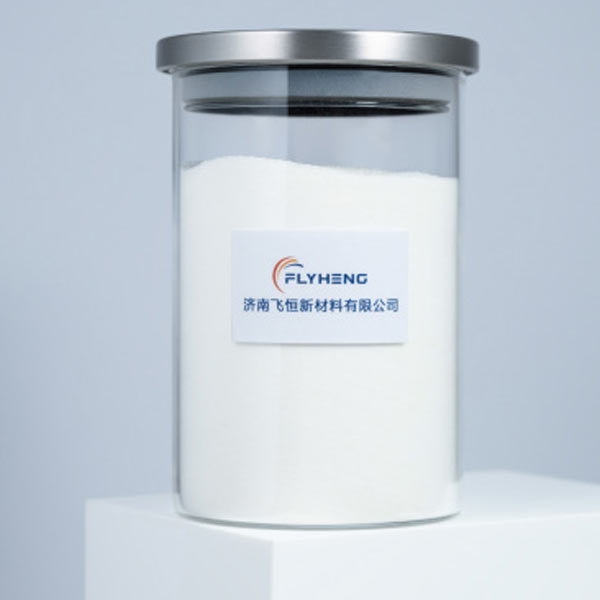Why PVC Processing Aids Are Essential for Sustainable Manufacturing
Release time: 2025-07-05
Why PVC Processing Aids Are Essential for Sustainable Manufacturing
Table of Contents
- 1. Introduction to PVC Processing Aids
- 2. What Are PVC Processing Aids?
- 3. The Importance of Sustainable Manufacturing
- 4. The Role of PVC Processing Aids in Sustainability
- 5. Benefits of Using PVC Processing Aids
- 6. Applications of PVC Processing Aids in Industry
- 7. The Future of PVC Processing Aids in Sustainable Manufacturing
- 8. Conclusion
- 9. FAQs
1. Introduction to PVC Processing Aids
In recent years, the demand for sustainable manufacturing solutions has surged, prompting industries to explore innovative technologies and materials. Among these, **PVC processing aids** have emerged as vital components that not only enhance production efficiency but also contribute significantly to environmental sustainability. Understanding their role is crucial for manufacturers aiming to align with eco-friendly practices while maintaining product quality and performance.
2. What Are PVC Processing Aids?
PVC processing aids are specialized additives designed to improve the processing and performance of polyvinyl chloride (PVC) during manufacturing. These aids function by facilitating smoother material flow, enhancing processing temperatures, and improving the overall mechanical properties of the final product. By reducing the friction between PVC particles, they ensure that the material can be processed more efficiently.
The Composition and Types of PVC Processing Aids
PVC processing aids are typically formulated from various polymers and additives, including:
- **Chlorinated Polyethylene (CPE)**: Enhances impact resistance and processing stability.
- **Acrylic Processing Aids**: Improve thermal stability and transparency.
- **Polyethylene-Based Processing Aids**: Provide enhanced melt flow characteristics.
Each type has unique benefits, making it essential for manufacturers to select the appropriate processing aid for their specific applications.
3. The Importance of Sustainable Manufacturing
Sustainable manufacturing focuses on minimizing environmental impact while maximizing efficiency and product longevity. It involves using processes that reduce waste, conserve energy, and lower greenhouse gas emissions. As industries face mounting pressure from consumers and regulatory bodies to adopt greener practices, the integration of sustainable materials and additives has become a priority.
Key Principles of Sustainable Manufacturing
1. **Resource Efficiency**: Using fewer resources to produce the same or more products.
2. **Waste Reduction**: Minimizing waste generation throughout the manufacturing cycle.
3. **Energy Conservation**: Implementing energy-efficient processes to lower operational costs and environmental impact.
4. **Life Cycle Assessment**: Evaluating the environmental impact of products from production to disposal.
4. The Role of PVC Processing Aids in Sustainability
PVC processing aids contribute to sustainable manufacturing in several key ways, enhancing both the performance of PVC products and minimizing their environmental impact.
Enhancing Product Performance
By improving the flow and processing characteristics of PVC, processing aids help manufacturers produce higher-quality products with fewer defects. This leads to less waste and a more efficient manufacturing process.
Reducing Energy Consumption
The use of PVC processing aids can lower the energy required during the manufacturing process. They facilitate processing at lower temperatures, which not only saves energy but also extends the lifespan of equipment.
Minimizing Environmental Impact
PVC processing aids can be designed to be environmentally friendly, allowing manufacturers to meet sustainability targets. Many of these aids are derived from renewable sources, contributing to a lower carbon footprint.
5. Benefits of Using PVC Processing Aids
The advantages of incorporating PVC processing aids are manifold, providing both immediate and long-term benefits to manufacturers.
Improved Processing Efficiency
Processing aids streamline the manufacturing process by ensuring a smoother flow of materials through machinery. This can lead to:
- **Reduced Cycle Times**: Faster production times translate to increased output.
- **Lower Maintenance Costs**: Reduced wear and tear on machinery minimizes maintenance requirements.
Enhanced Product Quality
Aids enhance the uniformity and consistency of PVC products, leading to:
- **Fewer Defects**: Improved performance characteristics reduce the likelihood of product failure.
- **Better Surface Finish**: Higher-quality surface finishes improve aesthetic appeal and marketability.
Cost Savings
While there may be an initial investment in processing aids, the long-term savings can be significant:
- **Reduced Material Waste**: Higher quality materials lead to less scrap and waste.
- **Lower Energy Costs**: Efficiency improvements can lead to substantial reductions in energy expenses.
6. Applications of PVC Processing Aids in Industry
PVC processing aids are versatile and find applications across a variety of sectors, including:
Building and Construction
In the construction industry, PVC is widely used for windows, doors, and piping. Processing aids improve the durability and performance of these products, ensuring they meet stringent building codes and environmental standards.
Automotive Industry
In automotive manufacturing, PVC components such as interior trims and dashboard elements benefit from enhanced processing characteristics, improving overall vehicle performance and safety.
Medical Applications
PVC is used in a range of medical devices and packaging. The addition of processing aids ensures that these products meet the required standards for safety and efficacy while also simplifying the manufacturing process.
7. The Future of PVC Processing Aids in Sustainable Manufacturing
As the push for sustainability continues to grow, the role of PVC processing aids will evolve. Innovations in chemistry and material science will lead to the development of:
- **Biodegradable Processing Aids**: To further reduce the environmental impact of PVC products.
- **Smart Processing Aids**: Incorporating elements that respond to environmental changes to optimize processing.
Moreover, the regulatory landscape will likely shape the future of PVC processing aids, with greater emphasis on compliance with sustainability standards.
8. Conclusion
PVC processing aids are not just additives; they are essential components that facilitate sustainable manufacturing practices. By improving processing efficiency, enhancing product quality, and minimizing environmental impact, these aids are transforming the landscape of the chemical industry. As manufacturers continue to prioritize sustainability, the importance of PVC processing aids will only grow, making them indispensable in the pursuit of a greener future.
9. FAQs
What are the main benefits of PVC processing aids?
PVC processing aids improve processing efficiency, enhance product quality, and reduce energy consumption, leading to cost savings and less waste.
How do PVC processing aids contribute to sustainability?
They help lower energy consumption, improve product longevity, and can be made from renewable resources, reducing the overall environmental impact.
In which industries are PVC processing aids commonly used?
They are widely used in the building and construction, automotive, and medical industries.
Can PVC processing aids be environmentally friendly?
Yes, many PVC processing aids are designed to be environmentally friendly, utilizing renewable resources and minimizing harmful emissions.
What is the future of PVC processing aids?
The future will likely see innovations such as biodegradable processing aids and smart technologies that optimize processing for sustainability.
By embracing PVC processing aids in manufacturing, companies can not only improve their operational efficiency but also contribute to a more sustainable future.
 sales@feihengchem.com
sales@feihengchem.com
 +8615665855919
+8615665855919 中文
中文 English
English España
España











